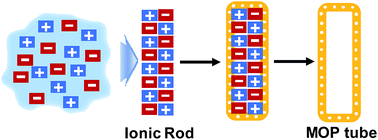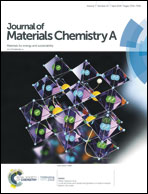Noncovalent and covalent double assembly: unravelling a unified mechanism for the tubular shape evolution of microporous organic polymers†
Abstract
This work unravels the unified mechanistic principle of the tubular shape evolution of microporous organic polymers (MOPs) prepared by the Sonogashira coupling of ethynylarenes and haloarenes. Using ionic building blocks (self-templates), in situ generated salts (in situ templates), or salt additives (additive templates), tubular MOP materials could be engineered. The assembled ionic species can act as morphology templates in the covalent assembly of building blocks to form MOP tubes.

- This article is part of the themed collection: Journal of Materials Chemistry A Advisory Board Collection


 Please wait while we load your content...
Please wait while we load your content...